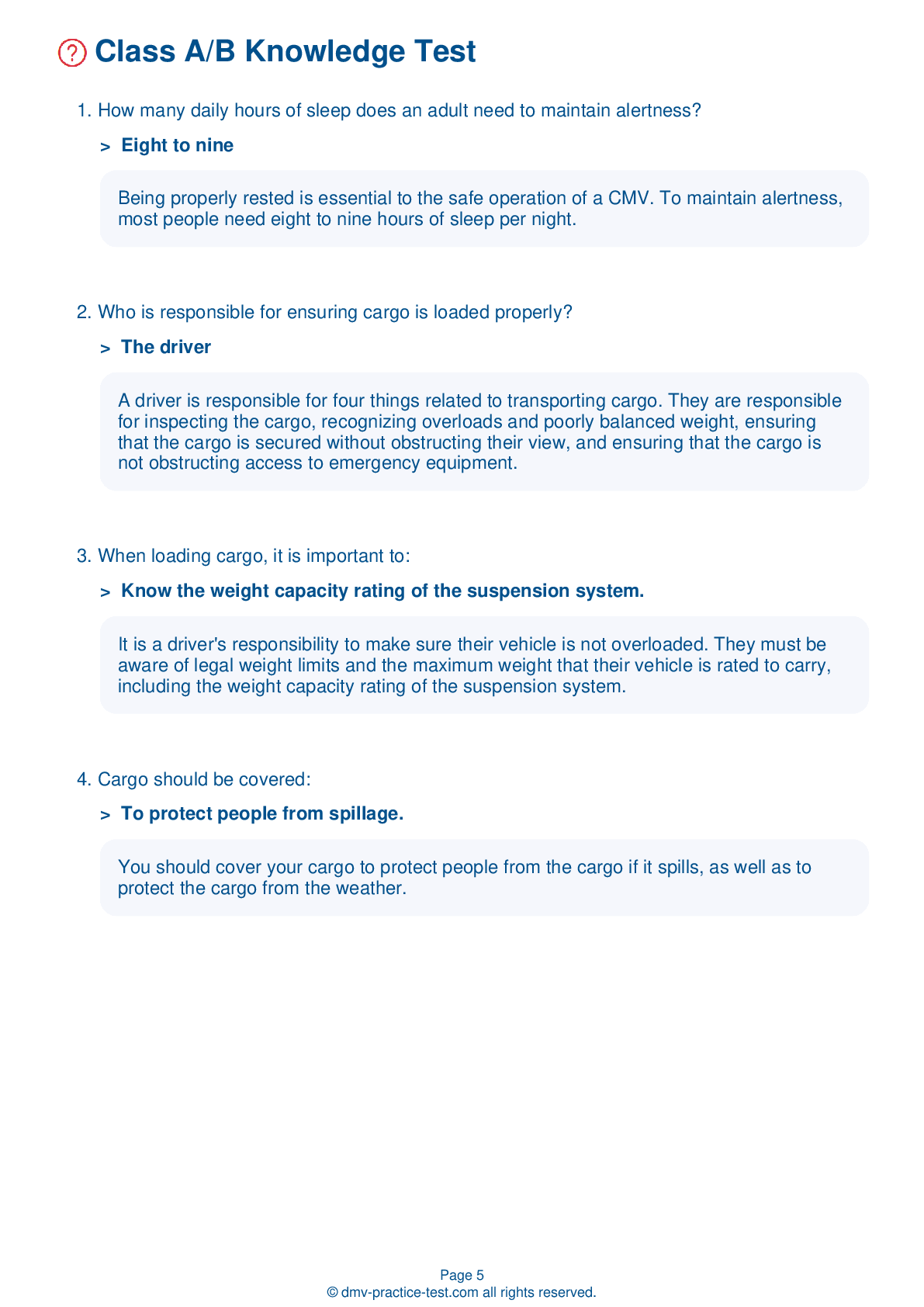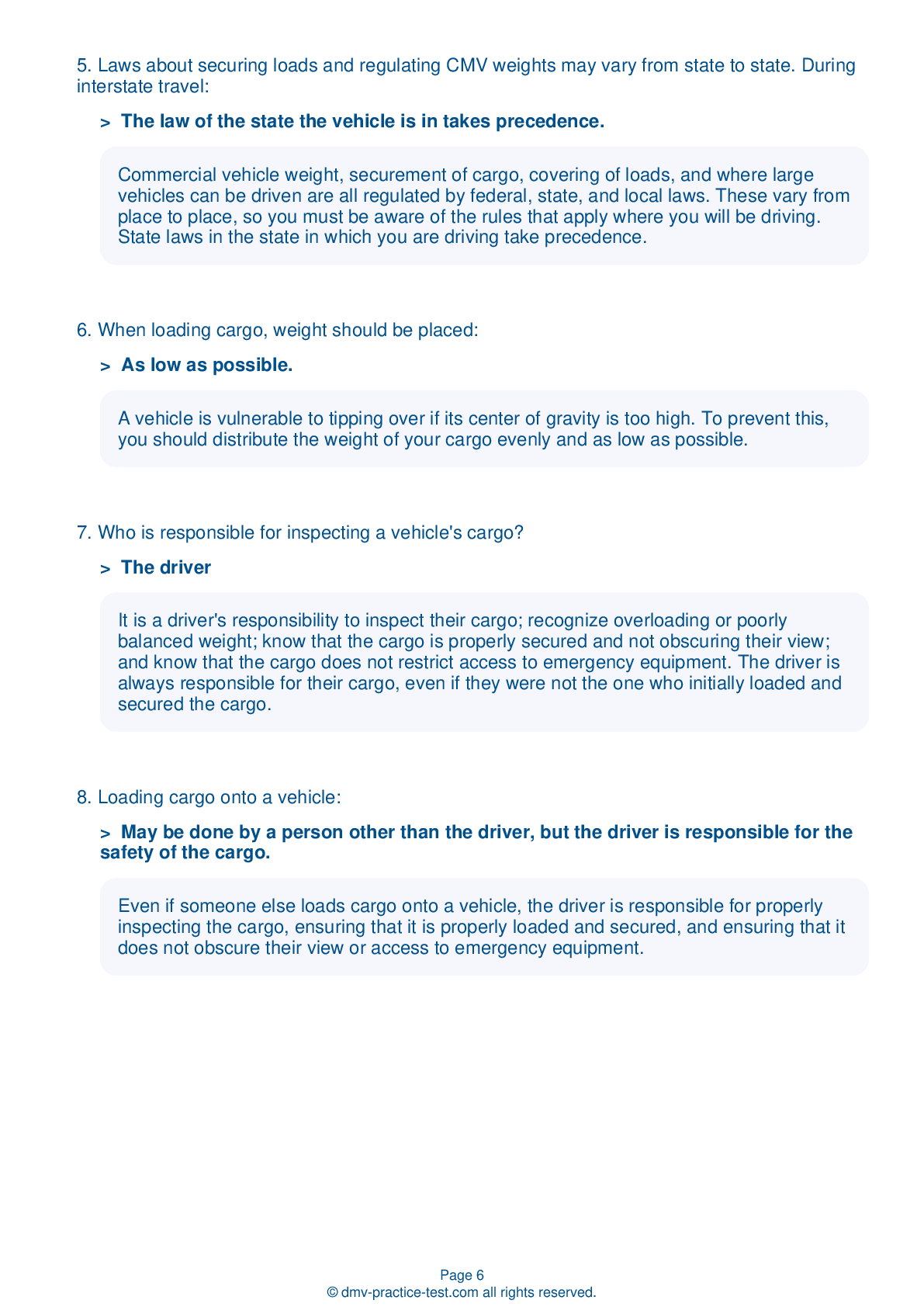Class A Driving Test | Connecticut 2026 #1
Train for FREE online with our Connecticut class A license test. The official exam test consists of several obligatory parts, with all of them checking your knowledge of different blocks of road rules. If you need to obtain a CT CDL class A permit in 2026, practice as much as possible. Free sample tests published on our website will help you check and improve your knowledge and boost your grades. Please bear in mind that CDL class A requirements may vary from state to state.
1 . A stopped bus:
Always drive cautiously around a stopped bus. Passengers may cross in front of or behind it, and the bus may prevent them from seeing your vehicle.
2 . If there are no warning gates or lights at a railroad crossing, you should:
A passive railroad crossing is a crossing that lacks control devices, like gates or warning lights. Before crossing a passive railroad crossing, you should search the tracks for approaching trains coming from either direction.
3 . When applying for a hazardous materials endorsement, being found guilty of which of the following is a disqualifying offense?
Amongst other crimes, a felony conviction for arson will disqualify a person from obtaining, renewing, or transferring a hazardous materials endorsement.
4 . The two indicators that determine when you should upshift are:
There are two indicators that determine when you need to shift into a higher gear. One indicator is the engine speed (rpm). You should read your vehicle's manual to learn its rpm range and shift up when you reach the top of that range. The other indicator is road speed (mph). You should learn which speeds each gear can accommodate, then keep an eye on the speedometer and shift up as needed.
5 . When transporting cargo, drivers must check the securement of the cargo every:
The securement of cargo must be checked before beginning a trip, within the first 50 miles of a trip, and then again every three hours or 150 miles thereafter.
6 . When pulled over to the side of the road, you should:
When stopped on the side of the road, be sure to turn on your vehicle's four-way emergency flashers, especially during times of lowered visibility. Place warning devices within 10 minutes of being stopped.
7 . How does doubling your speed from 20 mph to 40 mph affect your vehicle's braking distance?
Increasing your vehicle's speed will increase your vehicle's striking power and braking distance. Doubling your vehicle's speed from 20 to 40 mph will multiply its braking distance by four.
See the exact questions that will be on the 2026 Connecticut DMV exam.
99.2% of people who use the cheat sheet pass the FIRST TIME
Lillian MCcranie explains how our CDL study guide was helpful in passing the exam and recommends it to everyone.
Cameron tells us how he purchased the CDL exam, and found it to be a useful tool which helped him pass the exam and find a job.



